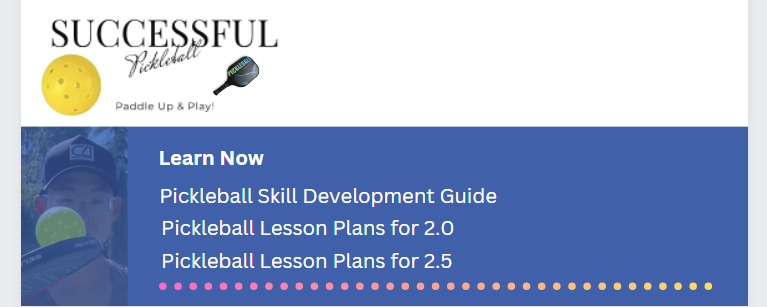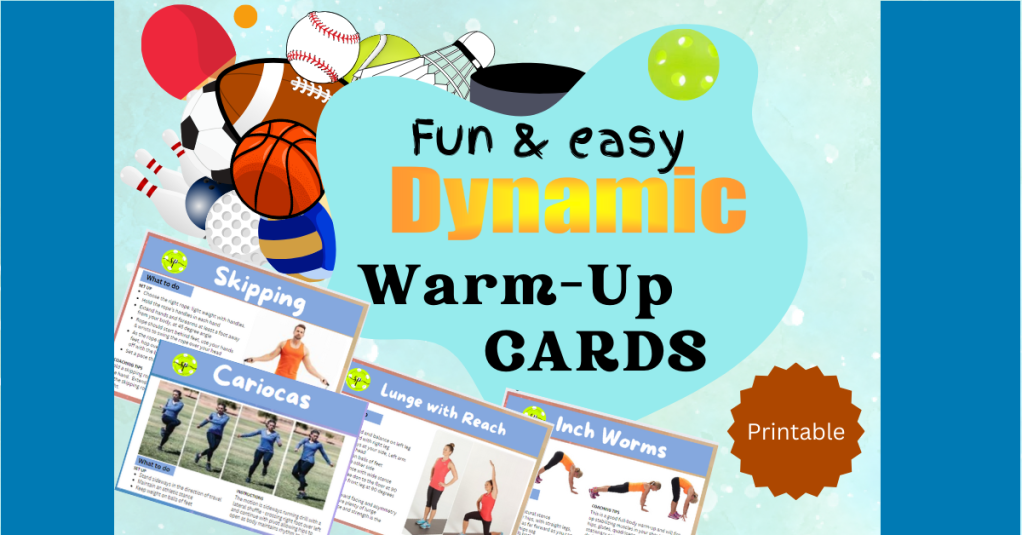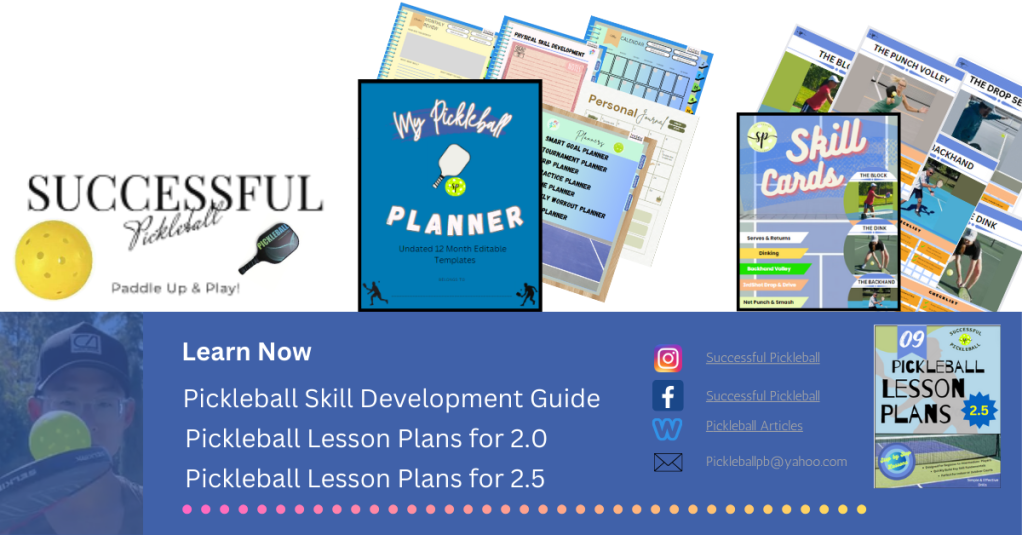A yearly training plan is long-term, flexible tool to help organize your training. Your plan is highly unique from other pickleball players. There are many factors that affect your play. Your training should reflect your potential to maximize your time on the court. If you are like me, a huge amount of my time is spent achieving goals I have set out. It is usually around the New Year, I like to take a look at the long-term picture to utilize every moment so time does not slip through the cracks. This is where I conduct a personal needs analysis to determine solutions to my performance problems and figure out the best solutions to my upcoming yearly training plan.
A Flexible Approach
Of the players I’ve met, coached, and play with, most have set times at their club to play, content with open or recreational play – enjoying pickleball for the social, and health benefits. Nothing wrong with that. Most stay within the structure of club availability and generally are committed to several recreational times of play weekly but they want to accomplish better skills during that time frame. It is possible.
Organizing a yearly training plan sets up recreational, competitive, and practice opportunities in advance to set the stage for long-term development with the flexibility to make changes at any point.
Functional Components of Yearly Training Plan
An annual training plan is a document that outlines a training program and is crucial for self development. It will include learning strategies, training goals, and training methods. Your training plan will consider current skills and short as well as long range goals. Concentrate on your individual growth for the maximum impact of your learning strategy and the overall success of your training plans.
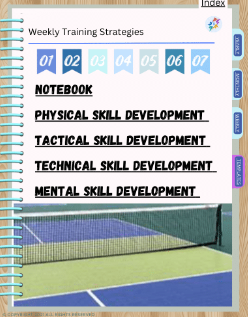
Core Pickleball Competencies
There are 9 core competencies or skills in pickleball;
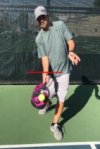
1. Serving, every point in a pickleball game starts with a serve. The serve provides many opportunities to set up your strategies to win points in pickleball. There are many different options for the serve in pickleball, using a very basic shot or adding maximum pace or speed, exploring with a very high trajectory, or curving the ball with a side spin. Mixing up your serves and keeping opponents off balance will give you an edge on the pickleball court.
2. Return of serves, evolving your pickleball game with various strategies like a high lob return to provide more time to join partner at the NVZ enabling a strong defensive strategy and keeping opponents deep on the baseline. Short drop and power returns are other alternatives to your return based on various strategies that will keep your opponents guessing.
3. Baseline skills which include groundstrokes, such as flat drives, slices, and soft shots or drop shots. Mastering a slice shot refers to putting an unpredictable bounce on the ball which will disrupt the rhythm of your opponent therefore increasing the chance to score a point. The ball flight and bounce is something that can be manipulated and lies directly in the positioning of your hand on the grip and the angle of the paddle at contact. Groundstrokes are shots executed with your dominate hand using power and precision on both the forehand and backhand.
4. Dinking and Dink Volleys are crucial to pickleball and once mastered, will provide an advantage on the court. So much of the game in pickleball happens the the Non-Volley Zone (NVZ) line. When to bounce soft dink shots and when to take them in the air is highly subjective so to win more dink battles on the court is often hidden in the answer. Taking time away from your opponent to induce an opponent error or avoiding a “funny” bounce from spin shots is usually the best time to take a dink in the air. Remember that this shot is most advantageous when you can comfortably reach it with your paddle, not likely to make an error, or the ball has a high apex: sitting above the net, and your feet remain behind the NVZ line.
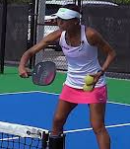
5. Resetting & blocking in pickleball is a defensive shot that goes over the net and lands in your opponent’s NVZ with the goal of neutralizing an opponent’s shot. The reset requires, “soft” hands, not power. Resetting is a difficult skill to master, but if you are positioned correctly with a wide base, loose grip, and absorb the pace of the ball, your chance of success are high.
6. Volley attacks from Non-Volley Zone. Seize control of a game with this vital component, the punch volley. By mastering this technique, you’ll improve your ability to react quickly and apply pressure on your opponents. Key components of a punch volley is a firm grip and face perpendicular positioning on the paddle. The contact point is in front of the body with a balanced stance and a compact, controlled swing. Your focus should be on precise ball placement. the best way to prepare to execute a volley attack is to anticipate your opponent’s “up” or high elevated shot.
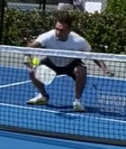
7. Transition zone skills including, drop volleys, drop half volleys, driving volleys, drive volleys, rolling approach ground stroke. The trick here is to stay low with a low centre of gravity, eye on the ball, transfer of weight from back foot to the front foot during the swing, and using your legs while the paddle moves from low to high creating a ball roll. The factors that influence the type of shot to use is your opponent’s positioning and playing style, as well as you your court positioning and playing style. Common shot challenges include inconsistent contact with the ball, lack of power, or hitting the ball too high or too low.
8. Lobs. Not everyone likes the lofted shot know as the lob. Some people love the high dramatic lob shot. The purpose of the lob is to offensively force opponents back to the baseline or defensively gain an advantage in positioning by buying your team time to set up at the NVZ. To create an advantage of surprise and catch your opponent off guard, lob a ball with a high controlled trajectory over the head of your out-stretched opponent paddle and back to the baseline but beware the overhead smash if the shot is miscalculated.

9. Overheads or smashes. An overhead smash shot is usually an adrenaline-producing hard angled downward projecting, rally-ending muscle-flexing contact shot. It is directed down, usually as a return of a missed lob shot or high return from an opponent. Contact with the ball is high and in-front of the body while shift body weight from the back foot to the front foot.
Keep in mind that some of the listed competencies will evolve as the game develops but all skill levels are based on how well players perform these skills. A great way to gauge which skills players possess and focus to improve performance is to study top performers. You can’t clone top talent but identifying their skills which makes them thrive in the sport is what others benefit from.
Shape your Training Priorities to Match Skill and Performance Gaps
Compare your desired skills with reality. How are you actually performing? Designing training without identifying performance issues is like trying to fit a square peg into a round hole – the training won’t be relevant or useful, and the performance gap will continue to persist.
- Get organized support for your training
- Key steps involved in skill gap analysis
- Things to consider when conducting skills planning
- How to define training and measure skill development
5 Key Parts to an Annual Training Plan
1. Identify Training Needs
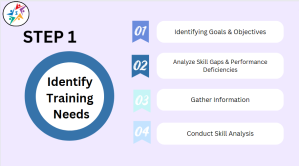
Identify required training needs by identifying goals and objectives, analyzing core competencies or skill gaps by conducting an assessment to enhance engagement of targeted training needs. Consider using templates to give you a head start here by covering things like, objectives and action plans. Setting your S.M.A.R.T Goals helps align benefits and direction.
2. Set Up Training Program
Any training plan will include the types of training activities or courses of action that will help learn new skills and reach training goals. Determining training content and curriculum involves defining the specific topics, skills, and knowledge needed.
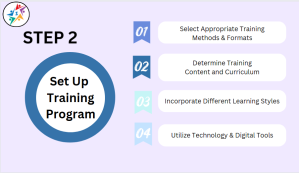
Try In-person training or coaching where face-to-face training will include instructor-led lessons in a format like workshops. Mentoring is another avenue to follow, if you can find a higher ranked player in which you can drill with. Virtual Training is another training process that some may consider. This includes online training courses, virtual reality training, recorded lectures, or videoconference seminars. Blended Learning is an approach that has caught fire post-pandemic and is an approach that splits learning into in-person training along with self-paced eLearning.
After choosing the most suitable training method and format, identify the competencies or skills needed to be developed. Align training content with identified skill gaps and performance deficiencies. Know the learning styles that best suit you, the player, like visual, auditory, or kinesthetic (doing). Create an inclusive training environment: open, psychologically safe, where belonging and participation are top priorities and leveraging technology along with digital tools.
Step 3 Develop a Training Schedule
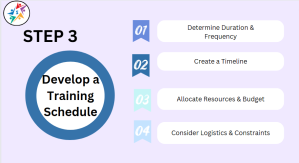
A well rounded training program fosters fundamental skill development and growth while utilizing time and resources. Decide the most appropriate duration and frequency of your training based on content and objectives. Consider availability, schedules, and prioritized commitments to ensure minimal disruption to daily responsibilities. Allow sufficient time for meaningful learning and application of new skills. A comprehensive timeline throughout the year will allow for peak periods of focus, deadlines, and availability. Distribute training sessions, and learning evenly throughout the year to maintain consistency in learning momentum. When you allocate resources and budgeting, strategic priorities will emerge and align with budgeting perimeters. Carefully developing a training schedule takes into consideration training facilities, club availability, coaching, or partnerships in training.

Step 4 Identifying Training Resources
Identify the resources you will need to support your training initiatives. Look to subject matter experts, or training professional coaches who can bring specialized knowledge and pickleball insights to enhance your training. Tailoring training content to your training gaps, gather fresh perspectives, and best practices that will best align with your training goals, budget, and availability. Streamline training development with new and innovative ideas and approaches to create a well-rounded high-quality training program.
Step 5 Implement the Training Plan
This is a critical step in realizing your objectives of your training calendar. Ensure your training initiatives are fully embraced to drive your desired outcomes. Successful implementation of your training will maximize skill development enhancing play standards so you can enjoy the game with a deep compassion.
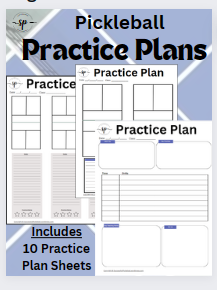
Pickleball Planner
Successful Pickleball is an organization that is passionate about pickleball and embraces community-building while being dedicated to fostering connections and helping fellow pickleball enthusiasts improve their skills. This website thrives to be the premier source of information for beginners and seasoned pickleball players. Our dedicated team spends a great deal of time conducting comprehensive searches and creating quality articles, strategy guides, rule explanations, and step-by-step tutorials to for our readers of every skill level. Don’t miss a single article, subscribe today!
